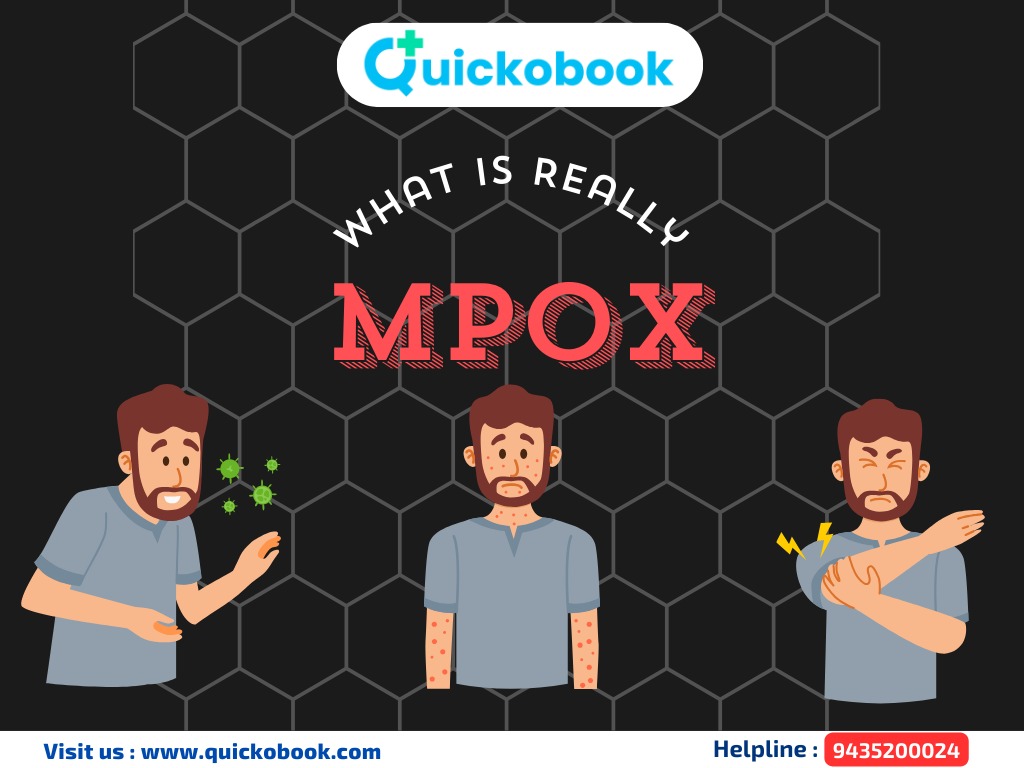What is Mpox ?
Mpox, earlier known as monkeypox, was first discovered in the year 1958 during outbreaks among the monkeys. Human cases were limited only to the central and western sides of Africa, commonly having links or contact with infected animals. In the year 2022, mpox was then identified as a sexually transmitted virus, leading to outbreaks in more than 70 countries that previously had not reported the disease.
Mpox is specifically caused by the monkeypox virus (MPXV). It is an enveloped double-stranded DNA virus of the Orthopoxvirus genus in the Poxviridae family, which includes variola, cowpox, vaccinia and other viruses.
The global outbreak of clade IIb began in the year 2022 and continued to date, even in some African countries.
The mpox cases in Africa have risen recently. The Africa CDC reported that the cases have increased up to 160 per cent deaths and 19 per cent rise in fatalities compared to the previous year. The new variant of the mpox virus identified in Congo has a higher fatality rate compared to the last variant and can even spread more easily. Unlike earlier outbreaks, this variant causes milder symptoms and lesions primarily on the genitals, making it harder to detect. Mpox has recently been identified in four East African countries—Burundi, Kenya, Rwanda, and Uganda—all linked to the outbreak in Congo. Meanwhile, less dangerous strains have been reported in the Ivory Coast and South Africa.
Transmission
Mpox spreads from person to person mainly when one comes close to someone who has mpox, including household members. Mpox can be spread through the air, an infected individual exhales can spread the virus in the air and when a normal person close to the infected individual inhales can be infected. It can spread with close contacts such as skin-to-skin mouth-to-mouth or mouth-to-skin. The virus can spread through sexual contact.
During pregnancy or birth, the virus may be passed to the baby. Contracting mpox during pregnancy can be dangerous for the fetus or newborn infant and can lead to loss of the pregnancy, stillbirth, death of the newborn, or complications for the parent.
Animal-to-human transmission of mpox occurs from infected animals to humans from bites or scratches, or during activities such as hunting, skinning, trapping, cooking, playing with carcasses or eating animals.
More research is needed on how mpox spreads during outbreaks in different settings and under different conditions.
Signs and symptoms
Mpox causes signs and symptoms that usually begin within a week after being infected but can start 1–21 days after exposure. Symptoms typically last 2–4 weeks but may last longer in someone has a weak immune system.
Some of the Common symptoms of mpox are:
• Rashes
• Fever
• Sore throat
• Headache
• Muscle aches
• Back pain
• Low energy
• Swallowing of lymph nodes.
The mpox rash usually begins from the face and starts spreading to the whole body, moving to the palms of the hand and soles of the feet. The virus can even start to spread to other bodies to which the virus was exposed, such as the genitals. The suffering starts as a flat sore, which then develops into a blister filled with liquid that can be itchy or even painful. As the rash heals slowly the lesions dry up, crust over and fall off.
Some people may have one or a few skin lesions and others have hundreds or more. These can appear anywhere on the body including:
• palms of hands and soles of feet
• face, mouth and throat
• groin and genital areas
• anus.
People may also have painful swelling in their rectum (proctitis) or face difficulty or pain while peeing (dysuria) or when swallowing.
Children or pregnant women and individuals having a weak immune system, including those living with HIV which is not well controlled, are even at high risk for severe illness and death due to complications resulting from mpox.
Diagnosis
Diagnosis of mpox can be difficult because other infections and conditions can also look similar. Hence it is mandatory to distinguish mpox from other spreading viruses or fungus like chickenpox, measles, bacterial skin infections, scabies, herpes, syphilis, other sexually transmitted infections, and medication-related allergies. An individual having mpox at the same time may also have another sexually transmitted infection. Even a child with suspected mpox may also have chickenpox. And for such reasons, testing is key for people to get clear about the disease as early as possible and prevent severe illness and further spread.
The preferred laboratory test for mpox is the detection of viral DNA by polymerase chain reaction (PCR). The best diagnostic specimens are taken directly from the rash – skin, fluid or crusts – collected by vigorous swabbing. In the absence of skin lesions, testing can also be done using swabs of the throat or anus. While testing blood is not recommended. Antibody detection methods may not be useful as they do not distinguish between different orthopoxviruses.
And it is also recommended that HIV testing should be offered to adults with mpox, and children as appropriate. Diagnostic tests for other conditions should be considered where feasible, for example, varicella zoster virus (VZV), syphilis and herpes.
Vaccination and Treatment
Treating mpox simply means taking care of the rash, managing pain and preventing complications. Early and preventive care is advised to help manage symptoms to avoid further problems.
Taking the mpox vaccine can help in preventing the infection. And it is recommended for people at high risk of getting mpox, mainly in an outbreak.
Individuals that might be at higher risk of mpox are:
• Healthcare workers
• Household members or members close to the community who have mpox.
• Individuals who have multiple sex partners
• Sex workers of any gender and their partners.
To this day there's no proven or effective antiviral treatment for the mpox virus. Hence it's a priority to continue the evaluation process of therapeutics in robust clinical trials and it is recommended to mainly focus on optimizing supportive and preventive care for patients.
People with HIV and mpox are advised to continue taking their antiretroviral therapy. Antiretroviral therapy should be initiated within 7 days of diagnosis of HIV.
Self-care and prevention
People with mpox can recover within 2–4 weeks. Some of the steps to follow to help the symptoms and prevent transmitting mpox to others are
Read Also: Is it a new Pandemic?
Dos
• Contacting the health care provider for advice
• Staying at home
• Regularly washing hands with soap and water and using hand sanitisers.
• Wearing a mask and covering lesions when around other people.
• Keeping the skin dry and uncovered (unless in a room with someone else)
• Avoid touching items in shared spaces frequently
• Using saltwater rinses for sores in the mouth.
• Taking counter medications for excess pain like paracetamol or ibuprofen.
Don'ts
• Do not pop the blisters or scratch the sores, that can slow healing, spread the rash to other parts of the body, and cause sores to become infected.
• Shave areas with sores until scabs have healed and one has new skin underneath (this can spread the rash to other parts of the body).
To prevent the spread of mpox to others, people with mpox should isolate themselves at home following guidance from their health care provider, or in hospital if needed, for the duration of the infectious period Covering lesions and wearing a well-fitting mask when in the presence of others may help prevent more spreading of the virus.
Health workers should follow infection prevention and control measures to protect themselves while caring for patients with mpox by wearing appropriate and adhering to a protocol for safely swabbing lesions for diagnostic testing and handling sharp objects such as needles.
India is carefully monitoring the Mpox closely after the World Health Organization declared the disease as a public health emergency. Despite the global rise in cases, particularly in Africa and Europe, Indian officials report a low risk of an outbreak. The government has enhanced surveillance and testing measures, with no new cases since March 2024.
However, as of now, no new cases of Mpox have been reported in India since March 2024. Officials maintain that the risk of a large-scale outbreak with sustained transmission remains low. The Health Ministry continues to focus on enhancing surveillance and ensuring that healthcare providers are aware of the symptoms and protocols related to Mpox. e pain and prevent complications.









Comments (0)
No comments yet. Be the first to share your thoughts!
Leave a Comment